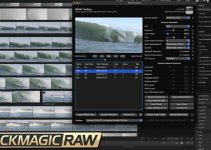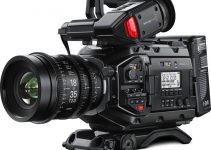Even though these counterparts belong to Sony’s mid-range mirrorless camera lineup, the plethora of professional video features they pack on board is quite impressive and still unbeaten for the price – internal 4K UHD video recording at 30fps, 1080p/120fps, S-Log2/ S-Gamut3.Cine/S-Log-3 and S-Gamut3/S-Log3 profiles, ISO range up to 51,200, advanced autofocus system, 5-Axis SteadyShot Inside Stabilization (Sony A6500) and the list goes on. Nevertheless, just as with any other camera system out there, both units need some further tweaking in order to produce more cinematic images straight out of camera.
In the above video, John Bechtold suggests some practical video settings that should save you the hustle of messing around with S-Log, applying LUTs and doing extensive color grading adjustments to the captured footage. Eventually, these should help you to produce more usable cinematic images while shooting video straight in your camera thus minimizing the time and effort spend on additional color grading later in post.
First and foremost, enter the main menu of your Sony A6300, and under Picture Profile select PP2. Then click on the right of your mode dial and adjust the camera’s Black Level setting. John recommends selecting -15 to get more richness out of your blacks but if you feel that -15 is too much to your taste, you can always pick a different increment from the available options on the list.
Once you set your Black Level, turn back to the previous step of the menu and access the Gamma settings. You can pick either Cine 3 or Cine 4 as these are arguably the best Gamma profiles you can opt for on this particular occasion. The last step of the process is to check out the Color Mode and choose S-Gammut3.Cine. To get as close as possible to your favorite cinematic look, you can also desaturate your image with a notch or two by setting the Saturation to -5.
Of course, you won’t be able to get the highest dynamic range out of your SonyA6300/A6500 with these particular settings, but if you want to achieve more cinematic look without putting much effort later in post, these settings should be a decent starting point for your workflow.
As other general recommendations, try to shoot in 4K while using the XAVC S codec whenever possible to retain the highest image quality, use any sort of stabilizing system or tripod to minimize the atrocious rolling shutter artifacts that the camera produces, double-check your white balance and try not to underexpose your footage.
What are your favorite settings when it comes to getting the most cinematic look when shooting with your Sony A6300/A6500? Let us know in the comments below.
[source: John Bechtold]
B&H and Amazon US Order Links:
Sony Alpha a6300 Mirrorless Digital Camera (Body Only) (B&H, Amazon US)
Sony Alpha a6500 Mirrorless Digital Camera (Body Only) (B&H, Amazon US)
Disclaimer: As an Amazon Associate partner and participant in B&H and Adorama Affiliate programmes, we earn a small comission from each purchase made through the affiliate links listed above at no additional cost to you.




